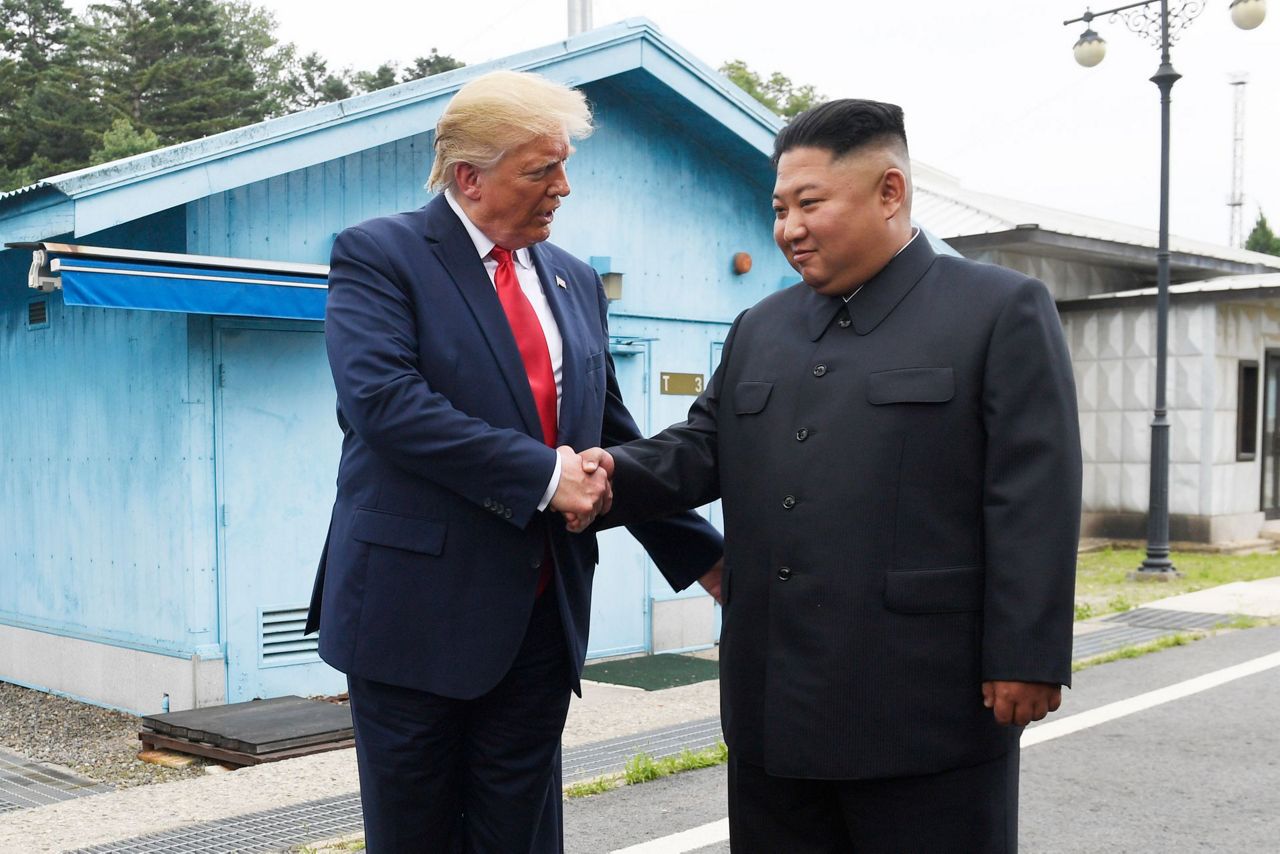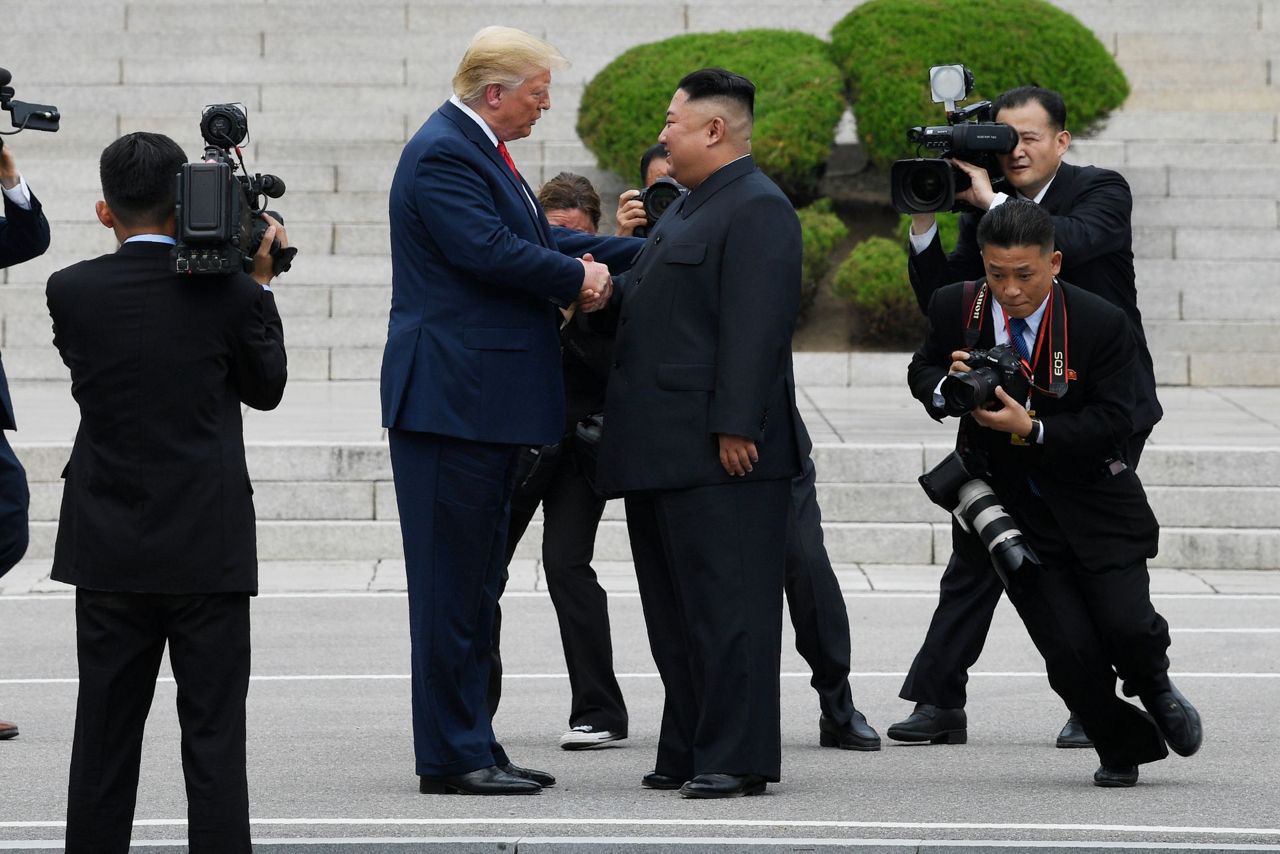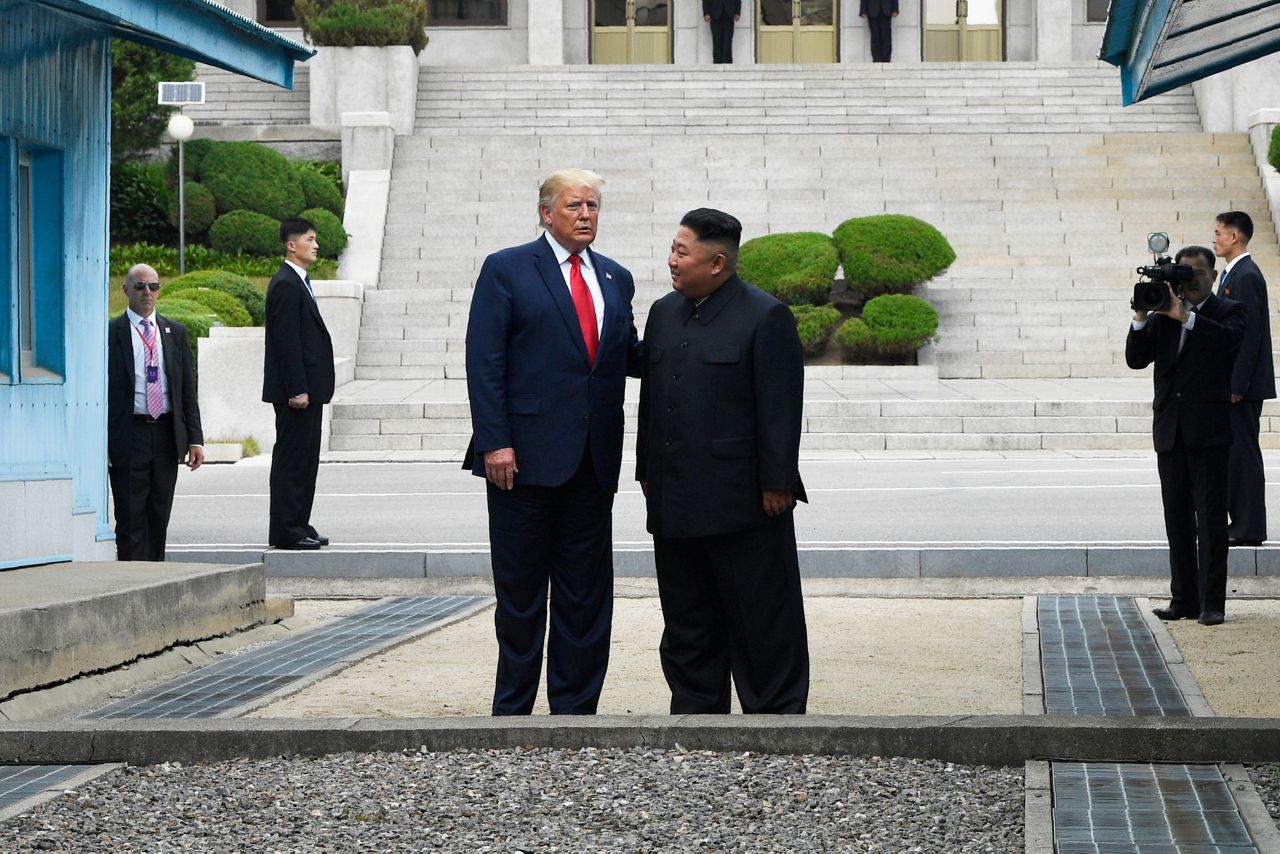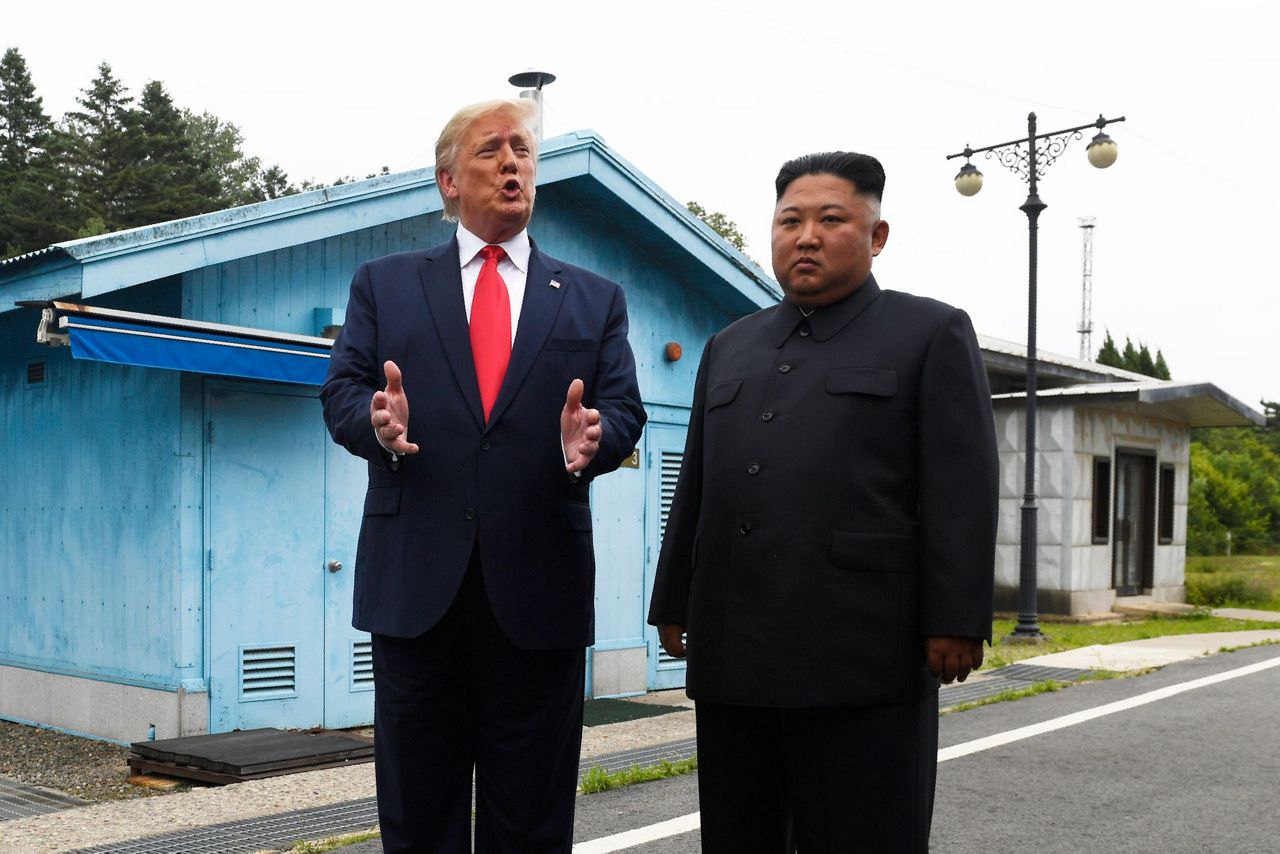TOKYO (AP) — It sure looked historic: President Donald Trump and North Korean leader Kim Jong Un strode toward each other Sunday from opposite sides of a strip of land that marks one of the world's most dangerous places. They shook hands and then Trump stepped over the concrete slab that marks the borderline between the Koreas, becoming the first U.S. president to set foot in North Korean territory.
But then again, the undeniably made-for-TV moment also had all the elements, as a cacophony of critics will quickly remind you, of the grandstanding photo-ops that some say characterize the Trump era.
So what was it?
A crass, reality-show grab for attention? Another history-making step forward — Trump called it "legendary" — in two highly unorthodox leaders' attempts to fundamentally change a relationship marked by decades of mistrust, bloodshed and frustration?
Sunday's sometimes surreal, sometimes chaotic encounter in the divided border village of Panmunjom was probably a little of both. In one moment, reporters and security officials jostled each other in a scrum to get a shot of the action; in the next, Kim and Trump emerged from private meetings with an agreement to restart nuclear disarmament talks.
It's never easy to sift through the frenzied reactions that proliferate whenever Trump and Kim take to the world stage, and the dramatic setting of this meeting was bound to heighten the noise. But whatever you might think of what happened, history will likely judge it on a single point: Will it help address the North's headlong pursuit of a fully functioning arsenal of nuclear weapons that can strike anywhere in the U.S.?
___
IT'S A REALITY SHOW
With a single tweet inviting Kim to the border, Trump on Saturday overshadowed the summit in Japan of the leaders of the Group of 20 major economies he'd ostensibly come to Asia for and back-footed the small army of Democrats jockeying to replace him in next year's presidential election.
The world's attention Sunday was suddenly riveted on the Demilitarized Zone that separates the rival Koreas, waiting to see if Kim would accept the hasty invitation to a place where burly troops from two nations that are still technically at war glare at each other across the borderline.
Once you move past the striking backdrop, however, there is a persistent and deepening skepticism among many experts that Trump is pursuing anything more than his own narrow interests.
They point out that for all the drama that has accompanied the Kim-Trump meetings, nothing has yet settled the stalemate the rivals now find themselves in: Washington wants the North to move much faster toward full nuclear disarmament before it grants the security guarantees and huge cuts in crushing outside sanctions Pyongyang wants; North Korea says the United States is losing a crucial opportunity by not providing concessions for the North's offer to scrap its main nuclear plant.
Widespread doubt has met each step in the strange, surprising relationship Trump and Kim have been building — from Kim's 2017 insults on Trump's intelligence and Trump's vows to unleash "fire and fury" that had many fearing war to the professions of love and respect and the exchange of "beautiful" letters after diplomacy took hold in early 2018.
The diplomacy beats the threats, these critics say, but each time Trump comes away emptyhanded from a new meeting, he only further legitimizes Kim as an accepted nuclear power.
___
NO, NO: IT'S SOMETHING BIG
The feeling that the handshake and brief march by Trump and Kim into the North could be part of something special is linked in part to just how far North Korea and the United States have come to get here.
The Korean Peninsula was split at the end of World War II into a Soviet-controlled north and U.S.-backed South. Then, after the terror of the 1950-53 Korean War, it was divided permanently along the Demilitarized Zone, with a U.S.-led U.N. Command controlling the southern side of the border area.
A succession of U.S. presidents and senior officials has trooped up to the DMZ over the decades to look with steely resolve into the North. There have been ax killings, U.S. bomber fly-bys and desperate defections — and that's just at the border.
Since the early 1990s, Washington and Pyongyang have been locked in confrontation as the North has steadily, through famine, leadership changes and crushing poverty, built its nuclear bomb program.
While it's open to debate if Sunday's meeting will be ultimately transforming, overall there has certainly been a sea change in the relationship between Trump and Kim — something Trump regularly mentions.
To take it to the next level, John Delury, a Korea expert at Seoul's Yonsei University, tweeted, "North Korea has to be made to feel less threatened, more secure, less under siege, more welcome in the world. ... For Donald Trump to meet with Kim Jong Un, however briefly, on a Sunday in the DMZ — a barren no man's land that embodies the unhealed wound of post-WWII division, the Korean War, and 70 years of animosity — advances the cause of 'establishing new relations.'"
There's also hope that even if this was mostly for the cameras, it can still push forward the diplomacy and help Kim build momentum domestically for stronger engagement — and possible disarmament.
The Kim-Trump summits have been breakthroughs in relations, "but they also revealed the limits of personality-driven diplomacy when it's not backed up by working-level talks held on a regular basis," according to Suzanne DiMaggio, an analyst at the Carnegie Endowment for International Peace think tank.
What's needed now, she wrote earlier this month, is "serious diplomacy to manage the uncertainties ahead and resolve a range of difficult issues."
___
Foster Klug is the AP news director for the Koreas, Japan, Australia and the South Pacific, and has covered North Korea since 2005. Follow him at www.twitter.com/apklug
Copyright 2019 The Associated Press. All rights reserved. This material may not be published, broadcast, rewritten or redistributed.







